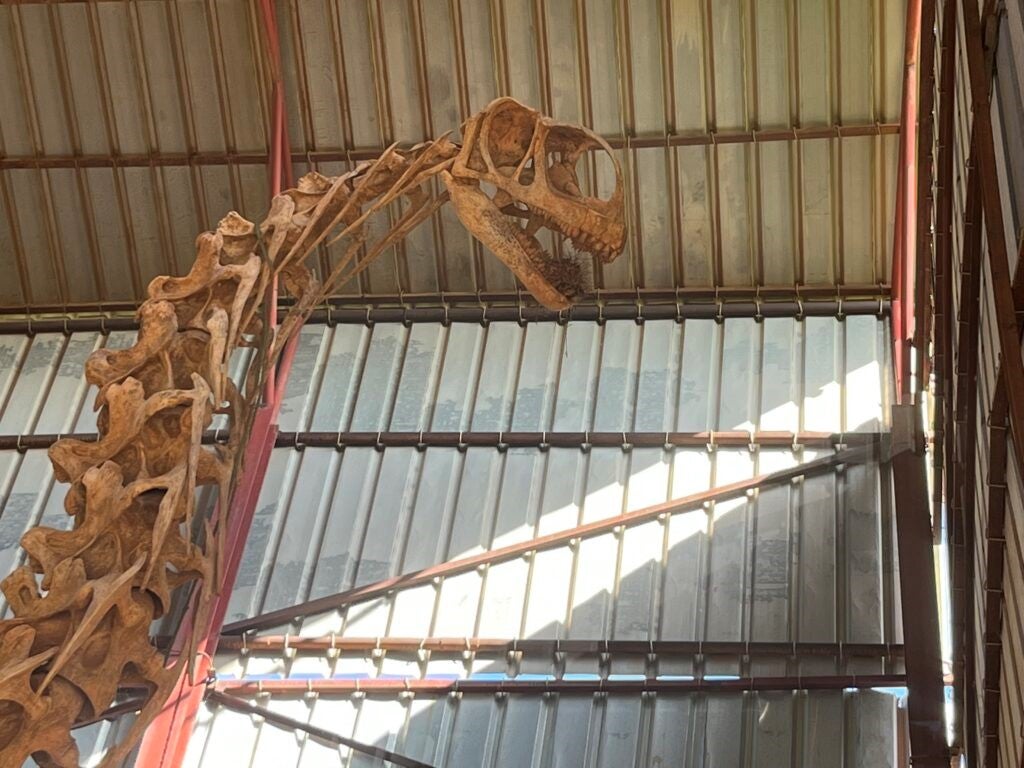
This first week has been spent in Niamey, the capital city of Niger. Our time has mainly been spent at the Musee National Boubou Hama, a
combination zoo and museum, which currently houses some of the fossils that have been collected in Niger including most prominently the holotype for Ouranosaurus nigeriensis (translating roughly in to the brave lizard from Niger). This species was an herbivorous beaked ornithopod from the Early Cretaceous that is aged at ~110–120 million years old and was discovered in Gadoufaoua, a fossil graveyard that translates from the Tuareg language into “the place where camels fear to go”. Unfortunately, the structures housing this fossil have begun to fall apart over time, threatening the preservation of the specimen and emphasizing the need for new facilities to display the nations fossil diversity. Two other holotypes Afrovenator abakensis (African hunter), a carnivorous theropod, and Jobaria tiguidensis (named for Jobar, a local mythical giant creature), an herbivorous sauropod, have not been prepared for display and have remained packed away in crates. Our mission for this week has been to catalog these three fossils, determine from old records which bones are missing, and use a technique known as Stereophotogrammetry, which involves taking photos from many angles of an object, to produce digital 3D models for each bone.

Most of my time has been spent piecing together and repairing bones of Ouranosaurus which show signs of a fresh break–one that occurred in the time since the fossil’s discovery. Doing this facilitates the subsequent generation of 3D models for the bones. In addition to these ancient evolutionary marvels, the Musee National Boubou Hama housed a modern creature with an interesting evolutionary story as well, the Kuri Cattle, a rare breed of cattle from the subspecies Bos taurus longifrons. This animal evolved from the same genus as all living domesticated cattle in the world (and from the most widespread species), but seems to be uniquely adapted to its habitat in the Lake Chad Basin, where its characteristic massive horns–which put even the Texas Longhorn to shame–improve buoyancy and allow it to feed on aquatic vegetation as a major source of food. Below are a few photos from the week including the team cleaning off the Ouranosaurus bones from their old exhibit, a Ouranosaurus pubis I helped to reconstruct, and the amazing Kuri Cattle. Bonus picture: a modern dinosaur nest in the mouth of an ancient dinosaur model from casts on display (Jobaria).
All of Robert's research blogs can be found here: https://robertaslaroche.com/blog/.



